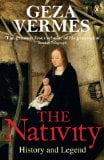 The Nativity: History and Legend
The Nativity: History and Legend
by Geza Vermes
Penguin Books, £7.99 (pb), ISBN 0-141-12446-1
Christian dogma rests on the life and teaching of Jesus Christ and in particular on his birth and death. Geza Vermes, one of the most distinguished of contemporary Biblical scholars, here examines the first of these. The direct evidence for the Jesus story comes in the New Testament, above all in the four Gospels.
These were, of course, all composed some time after the events they describe, and are a selection from an unknown number of accounts, oral and written, that circulated in the early years of Christianity. The Gospel accounts are inconsistent with each other, and also internally. Only two, Luke and Matthew, deal with the birth of Jesus. They do so in quite different and contradictory ways. Internally, Luke provides an elaborate genealogy for Joseph, the husband of Mary, Jesus’ mother, to show that he was descended from King David. Thus his son would be eligible to be the Royal Messiah. But he also makes it clear that Jesus was literally the son of God, not Joseph. Vermes quietly and methodically teases out the various strands that make up the two accounts, drawing on obviously immense scholarship, but writing with elegant clarity. He shows what must have been added by the gospel writers, or later editors, and what may be based on historical fact. There are those who suggest that Jesus never lived at all, but a more balanced view is that he was a charismatic preacher who was born about 4 or 5 BCE and was executed some thirty-plus years later. Stories and legends accumulated around him for several centuries, and such were the two nativity accounts. Vermes concludes that the purpose was “the creation of a prologue, enveloping the newborn Jesus with an aura of marvel and enigma”, and thus fitting him to be the divine Saviour of the new religion as it broke from its Jewish roots and sought to become universal.
John Radford

